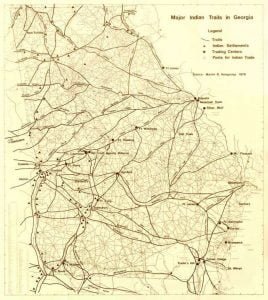The Creek Warrior Class
The geographic position of the Creeks in the midst of warlike and aggressive nations was a powerful stimulant for making “invincibles” of their male offspring. The ruling passion was that of war; second to it was that of hunting. A peculiar incentive was the possession of war-titles, and the rage for these was as strong among the younger men as that for plunder among the older. The surest means of ascending the ladder of honor was the capture of scalps from the enemy, and the policy of the red or bloody towns was that of fostering the warlike spirit by … Read more

